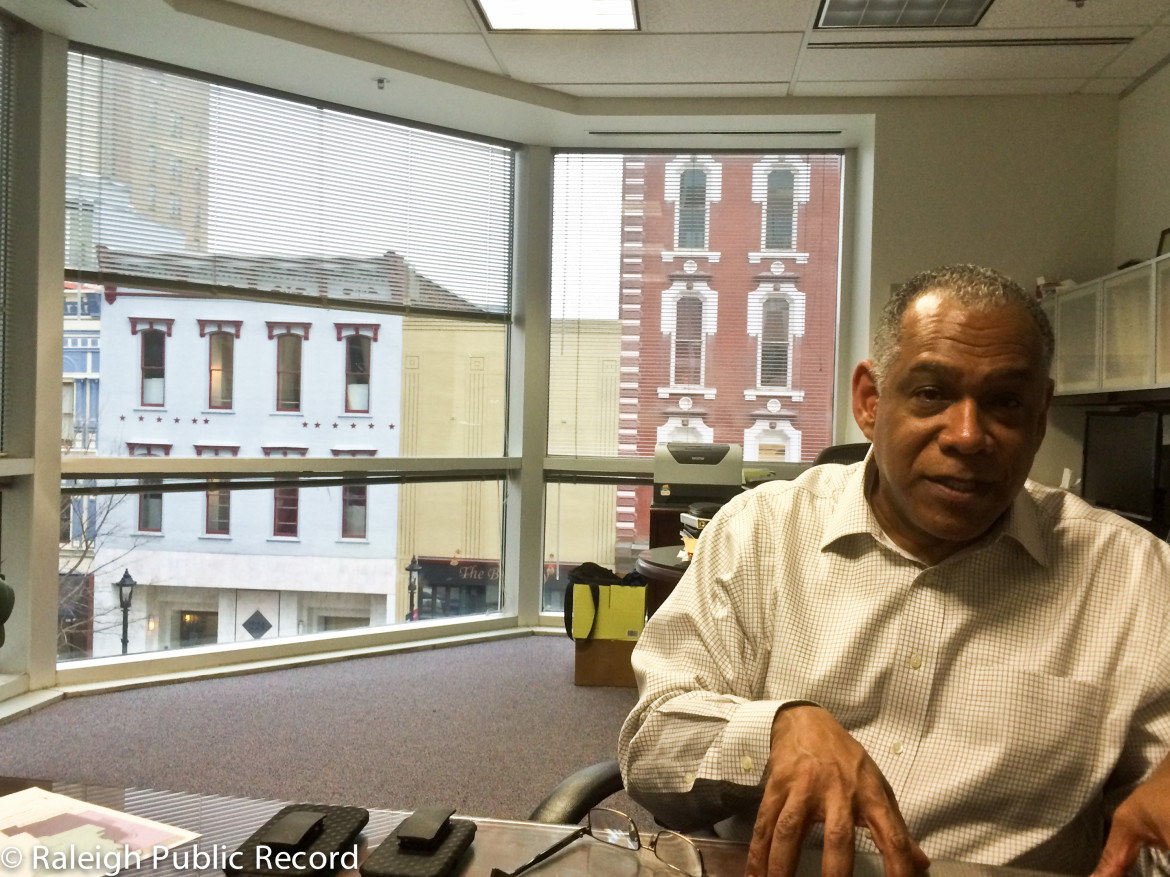Mitchell Silver served as Raleigh’s planning director for nine years. Later this month, he will head north to take over the parks department for New York City. Silver sat down with Record editor Charles Duncan last week to talk about the challenges and successes of shaping Raleigh’s future, and what’s ahead for the city.
Listen to the interview.
Look at when you got to Raleigh. What are the differences you see now?
When I got here in 2005, Livable Streets had just been adopted, which included a convention center, a hotel, so my role was really to help implement since the plan had already been completed. When I got here, downtown, it really didn’t have a strong identity. Fayetteville Street was still trees and benches. It was just closed, it was an actual mall, and there was a civic center where the city plaza sat. The city was really, I think, very close to its suburban identity.
So it was a city that I kind of joked about and said that it was kind of Mayberry ready to go Metro but it was more Mayberry to Metro and I think it was very comfortable that way at the time. I can’t remember the population; it was somewhere in the low 300,000. But it was a great place. Warm place. People wouldn’t give you an address; they would give a place where to meet. I’m from New York so they’ll give you an address: “Go to 652 First Avenue.” Here it’s: “I’ll meet you at Pam’s Kitchen. I’ll meet you at McKimmon Center.” It was a different culture, a different place when I got here.
As I drove around, every place almost looked the same. It took me a while to know Falls of Neuse, Six Forks. I just knew that these were just kind of thoroughfares. Capital Boulevard I knew right away because it was very different than some of the others.
It really had a very nice green canopy; the trees really fit the city in the park. And I felt that I really enjoyed that and found it beautiful. So that was then.
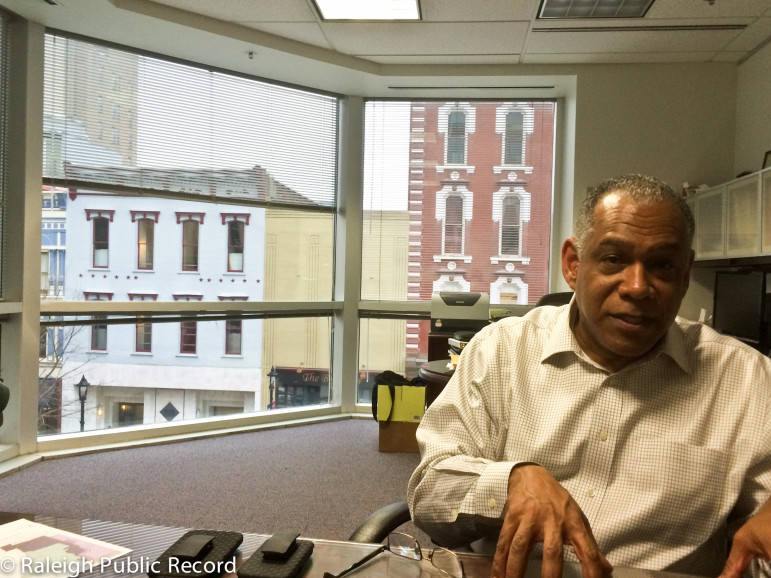
Charles Duncan / Raleigh Public Record
While we had a strong tradition of planning, I knew going forward we had to do things a little bit differently. I’m always into finding emerging trends and demographic trends and knew with the change coming, the transplants that were moving here, that I knew something had to happen to prepare us for the next wave of newcomers and the next wave of growth.
That’s why I took the job. I was reluctant. I was short-listed for three cities and Raleigh kept floating to the top of the list only because I felt that it was a city on the rise. My deciding factors when I looked at these three cities: I said, “Which one do I want? What is their potential 10 years from now and which ones do I want to be part of that growth?” And Raleigh just won hands down. It just seemed like it was a city that was ready to be great. And I felt that it was a good chemistry with Raleigh and [City Manager] Russell Allen at the time. I did as much research at the time about Raleigh as Raleigh did researching about me. I think we both were interviewing each other. And I felt it was the right fit.
When I got here that I was worried when I walked across downtown in 10 minutes and I was calling my wife and saying, “I don’t know about this.” You aren’t supposed to walk across downtown in 10 minutes. And I walked from one end to the other. And I said, “no.” I don’t know if I can take this job. There’s just not enough “downtown” downtown. But then I felt that I could play a role in shaping that. At least, a hand in shaping it going forward.
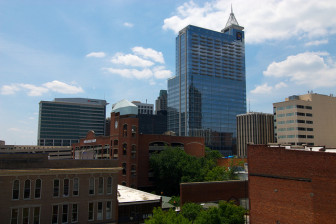
kakissell/Flickr Creative Commons
Downtown Raleigh
I knew that the era of sprawl was coming to a close and I knew that we could no longer, with demographic change, live on a diet of single-family homes. Demographics were changing. People were looking for more urban lifestyles. When I was looking for a home, I had two choices: I could either live in a suburban home or I could live in a suburban home. I didn’t have choices. And so I knew that with the population changes both empty nesters and the younger population want a different lifestyle choice.
So we first did a land-capacity analysis and we found out how much land we had left. Roughly at that time, it was 2006, we had 20,000 acres. Then we projected how much growth we would get by 2030. I basically said, Raleigh, if we keep building single-family, we’re going to run out of land in about 20 years. We have to do something differently. That was the beginning of the conversation for the comprehensive plan. At the same time, believe it or not, back in 2005, I could find no other city except, I think, one in Texas that was using the term “21st century city.” Nobody. This was 2005 and I couldn’t believe it. So, we launched a lecture series called the “21st Century Lecture Series” because nobody was having a conversation about 21st century cities.
There was a strong constituency for planning and so, I felt, let’s have that conversation, see who’s interested. It was the same time we were launching the comprehensive plan and it shocked me. Four hundred people filled Memorial Auditorium, and that’s when I knew that there was pent-up demand for this conversation. That’s when we started transitioning from this suburban footprint to, if we’re going to grow, we have to start coming up with some dense urban locations for our city growth centers. We could start to build a city of the future.
Some cities come of age in twentieth century; New York, Boston, even before that. Raleigh was one of those cities that was coming of age in the 21st century. I wanted Raleigh to be the leading city in that regard. We didn’t want to be like a Portland. I wanted us to be a leader and want other cities to be like us. A turning point happened a little bit after when I got here. The difference between the two is I think I was ready and I think I came to this place at the right time to help Raleigh move in that direction. More urban so that it wasn’t all suburban; people have choices for the first time. You can know live in a Cameron Village, you can live on Hillsborough Street, you can live downtown, or you can live in a suburban location. We just did not have a lot of those choices before.
What do you see as your biggest accomplishments?
I’d say there are two. One, I’d have to say building a culture for good and smart planning. Everything else stemmed from that: the desire to have the best Comprehensive Plan and blueprint for growth possible. The desire to have a good Unified Development Ordinance. The desire to understand placemaking and experience a place very differently. You know, all those things fit in but we first had to have an appreciation and a culture for planning. To me, that is something that will live on, if we continue it, for generations because now, to walk the street and see a younger generation interested in Walk Raleigh and parklets and biking and walking; those voices weren’t talking when I was here. They were silenced.
Somehow the culture for planning and for innovation and for placemaking unleashed that pent-up demand to have a conversation. Now I just sit back and I’m in awe about the energy that’s happening. I don’t have to be that cheerleader and push as hard as I used to because now the younger generation has embraced it. The older generation tends to do public meetings and often say “no” to things because they are concerned about change, where the younger generation — over 70 percent of our population is 47 and younger — now have a voice and the Council is listening.
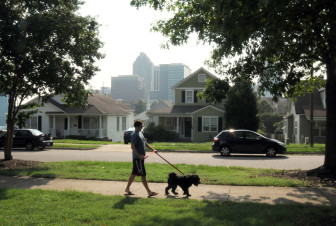
A man walks his dog down Chavis Street with a view of downtown Raleigh behind him.
Now there’s this richness of innovation and creativity, all this stuff is happening to our downtown. It is refreshing that young people now feel that they can buy in and have ownership of their city. And Council is embracing it. That to me is a legacy that you hope for and will last with this community. We’re being looked at nationally as a role model for innovative and sound and good planning practices. To me, that is something that is the best legacy that I could leave for city and that I hope continues as I hope to come back here and retire. So, y’all better get this right and keep it going. But that allowed for all the stuff that we do.
Without that support and foundation coming from Council as well. There’s now a new expectation about planning in this city. There is a high expectation about quality of excellence. I’m not saying that our predecessors didn’t do it. They were in an era of more of these nodes and having these centers that was more of an urban format based on a suburban footprint. My job was to have a conversation to shift that to more of an urban footprint of centers and quarters, preparing ourselves for light rail, preparing ourselves for the next 50 years of the city.
The other one is the Comprehensive Plan. I think they go hand-in-hand. To me, that one was very important. Clearly I think the culture of planning, the Comprehensive Plan and the (Unified Development Ordinance), because they kind of go in tandem, are things that I’m most proud of because those will live on for the next twenty years and the code could be the next 50 years.
What are some big things on your to-do list that you were hoping to do in the coming years?
Number one was our revitalization strategy for Southeast Raleigh. We’re started conversations about how to have a strategic development strategy to start releasing some of those parcels and start working with some of the [Citizen Advisory Councils]. That’s on the books, we’ve been trying to do that for two years and we’re getting close. That’s something that I wanted to see. Stone’s Warehouse is going forward but there are some other strategic projects that we wanted to see implemented.
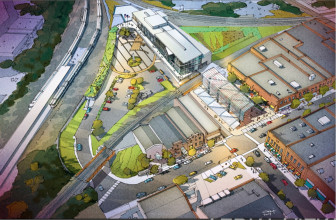
Rendering provided by City of Raleigh.
An aerial view of Union Station.
One of ones is Union Station. There were two attempts to get what we called a multi-modal facility. I’m very proud that we were able to move Raleigh Union Station forward and it’s going to a reality by 2017. I will hopefully come back for the ribbon cutting but that is one I will love to see when that project gets off the ground and watch its construction and evolution. That gets me quite excited.
Light rail. I really wanted to be here to help guide that forward. Not just the light rail but that whole conversation about if there’s a referendum passed how are we going to shape light rail and bus rapid transit and bus. Our plan, our footprint, our growth framework plan was built for that. So, that’s the stuff that excites me because we created these transit villages along the quarter. So I would have loved to start going into each one of those nodes and to start to plan that experience of each one of those along the light rail.
And then the downtown plan. This is one I’ve been fantasizing about for years. We wanted to make sure we did planning outside of the downtown core because people would accuse us that “Oh, everything is about downtown. Why are you spending downtown?” So, I’ve waited five years and we’re launching it April 2. Now all I can do is get all of my ideas, most of them, on the table and I will not be able to see the end of that product. And then downtown south, which is below MLK, we’re going to wrap it into the South Saunders plan so that’s another one that I had a vision for when we did the Big Ideas publication. I will not be able to finish that one either.
Union Station, Light Rail, Downtown Plan, and Downtown South, those are the ones that it kind of hurts that I will not be here to be part of those planning processes.
What are the differences you see between planning for someplace like Hillsborough Street and a place like Southeast Raleigh?
In Southeast Raleigh it was interesting because there was a lot of concern about what to do. With community development and planning, very often, it was a go-slow approach. Not a lot happened. If nothing happened we were accused of neglect. If we tried to do something, we were accused of gentrification. It was situation where no matter what we would do, we were guilty of something.
It was very difficult to figure out what was the right thing to do because of that dilemma. Do nothing, you’re neglecting us; do something, you’re gentrifying us. So, we’ve met for the last two years in this re-development strategy to figure out what is the right way to go forward.
We’ve worked with St. Augustine’s University on one approach. We’re now working on another plan in College Park-Idlewild. That has been, I think, our challenge going forward. I think Council was at a point after we came up with our new re-development strategy to proceed. So, we are doing that strategically with our partners but it is still one of those delicate things because there’s a concern that if we invest too much, it could gentrify the neighborhood and then we’ve been here all these years, we get pushed out.
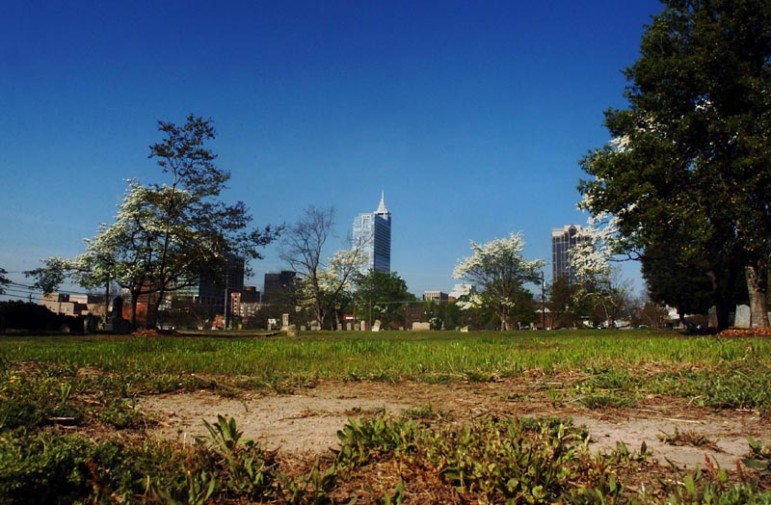
Hide Terada / Raleigh Public Record
The view from City Cemetery.
That’s what’s different in Southeast Raleigh, very close to downtown and people just feel threatened. I had a session years ago when I first got here about how gentrification can be addressed but there’s still concern and skepticism and that really has been our challenge in Southeast Raleigh.
How do you embark on an effort to work on an area and give it the same attention you give Hillsborough Street without gentrifying it?
One is density. You strategically figure out where you could put density. Because those that own property they are in the best bartering position because they can sell if they want to or if they stay potentially might see a slight increase in taxes and see changes in the tone, flavor, and composition of the neighborhood. But those that rent, those are the ones that are the most vulnerable and so by increasing the density, you now have more room, more inventory to keep them in the neighborhood.
The problem is, some in the neighborhood don’t want density because they equate rental to something that’s not good, it’s not home ownership. This is a delicate balance you have to walk but most models will tell you having mixed income, more density is a way of preventing those renters from being displaced and staying in the community. That’s the delicate balance we’ve tried to walk in Southeast Raleigh but that has been the remedy in most places: increase density, provide more units for the people that are there. If you do a one-to-one replacement that’s more likely that people get displaced.
Saying “I just want single family homes” puts people in the worst position of being pushed out and displaced. More density means just more room for more people to stay. But the neighbors were kind of opposed to rental, opposed to density. So that’s why I’m saying it has been somewhat of a challenge. So that’s the remedy usually, that density, mixed-income density is a way that you can address some of those displacement issues.
Planners are often in the worst position in every public meeting. How do you balance that and how do you figure out how to work through those issues?
Usually, planning is dealing with people’s property and there’s nothing more sacred than someone’s investment so that is where, I think, the concern gets heightened. As planners, we’re not decision makers, although some people think we are. We’re not. So, we know we’re going to a situation where we’re dealing with someone’s probably the biggest investment of their lives. You have to go in there with a level of respect but at the same time, we protect the public interest. We have to have uncomfortable conversations because we are planning for a city of today but also planning for a city of tomorrow.
Our job is to understand the long-term consequences of present action, so you’re planning for both present and future generations and the average citizens saying “I’m here. I’m the taxpayer. It’s about me.” But we have a great city because someone 20 years ago cared about us. That’s why our city is so great. That’s a delicate balance we walk.
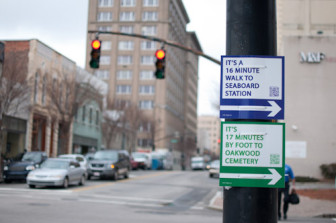
Jennifer Wig / Raleigh Public Record
Walk Raleigh signs on Hargett Street.
Also, we have to have a sense of purpose of what we’re doing and we protect public health, safety, and welfare and look at the economic vitality of this city. So, when we go in to these places, staff has to understand to keep a calm and cool demeanor because we have to respect that this is people’s property. Going forward, we have to create an economy of a vibrant city that will live on for generations. So, we just have to smile, develop some tough skin. The planning process allows all voices to be heard. Sometimes you won’t like what people have to say but we have to allow people to communicate their concerns so we can figure out best approach going forward.
It’s something that you learn in planning school. You’re quickly tested once you get your first job. I’ve had t28, 29 years of this so it doesn’t bother as me because I know people are going to say what’s on their heart and on their mind, so just don’t take it personally.
So, what are some of the key lessons that you would hope to pass on to your successor?
I’m a planner so we have a code of ethics. I would encourage you to read because there are some very strong aspirational principles in our code of what it is to be a planner. To remember a sense of purpose and why we do what we do. That’s to protect public safety and welfare, to plan for present and future generations, to think about uncertainty about the future but at the same time understand that planning is a collaborative process. We have to listen to all voices. You sometimes have to say what you believe is in the best interest of the city knowing it’s not popular or if you have a vision for the future, you do have to have to stand your ground and articulate your point.
You’re not making the decision but have the courage to say the things that need to be said so that when the Council or planning commission need to make a decision it’s on the table. I always believe that if I’m in the court of law, there’s always two points of view being argued, there’s the plaintiff and there’s the defendant. I’m not comfortable when only one point is being advocated. You need to have both points of view advocated so that the decision maker can make a decision; I believe planners have to play that role.
We’re not making a decision but if there is a self-interest being represented, I’m advocating for the public interest and that point has to get across. Sometimes, my comments aren’t popular. I’m not here to be popular. I’m here to serve my role as a planner. I’m certified, I have a code of ethics, and so I have an ethical responsibility to represent the public interest. That’s what I pass on to my planners: to understand your role, understand your sense of purpose, and why you’re doing this profession and why you’re doing this for this city. That’s more of the kind of the framework.
The rest, of course, is listening to all parties, recognize you’re not a decision maker but that you should be able to also look at emerging trends. I believe planners should look at trends like a stockbroker looks at the market: as looking at what’s ahead so you can prepare the city. What are the trends that are going to affect us? What are the housing trends? The demographic trends? The population trends? The trends in ethnicity and culture?
Those trends affect how we plan for place and to ignore the fact that we’re moving toward more single households means that our housing types need to reflect that. The fact that we’re getting older and aging in this community means that our mobility choices and how we design our units have to reflect that. These are the things that make us better as a city and prepare us for emerging trends. I hope that the planners that I’m with, because I talk about this all the time, whether it’s water or air quality, constantly watch the trends. Because if we don’t do it in this city, nobody else will. That is our primary responsibility: to address the uncertainty about the future by those trends and figuring out how it will affect Raleigh.
So, what do you think some of the major trends are going to be for the next while?
Changing demographics. By 2020, Raleigh will be a minority-majority city. Now, we handle it well because we are 53 percent white, 43 percent non-white so nobody even knows that’s happening. So far, we’re doing well. We will hit the tipping point, I guess, sometime in the 2020s. That’s what we have to watch out for. What does that mean? Schools will get more diverse, neighborhoods will get more diverse. That’s something we have to adapt to. Aging population, this is going to be a national phenomenon. Some people can’t drive once they hit a certain age. Are we going to build senior housing units on the outskirts of town or can we integrate them so people can age in place and have more mobility options?
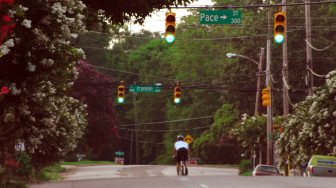
Karen Tam / Raleigh Public Record
A bicyclist has all of Person Street to himself for an evening ride.
We will see changes in families, in household sizes so the service we provide for parks and rec, services we provide in our city are going to change. That’s just a sample, but certainly what type of housing we build and we’re already seeing that change occur. This community and this country are going to have to understand that being a renter does not mean you’re un-American. That people have got to adapt to the new lifestyle choice for many, many people which is to rent rather than own. In many communities being a renter is not a good thing. It means a reduction in property values, it means potentially crime and that is not the case.
You’re the face of the new renter. I’m going to New York. I’m the face of the new renter. People have got to get this image out of their head that renting is something bad. It is now a legitimate lifestyle choice and with the change in demographics of a rising single-person household by the 2020s. We’re going to see smaller units and more rental units coming online. That is something that is going to have implications for Raleigh.
And, finally, mobility choices. We’re seeing a shift where less people want to drive, they want to either bike, walk, or have different transportation choices. There’s a push back and a debate going on about what our future transportation system will look like. That has implications of changing demographics. These are just a couple of examples of where we are going.
I have a saying that it is better to be prepared than be in denial, and smart places know their sense of urgency 10 years before it’s urgent. Austin is too late. They’re calling us and saying, “Raleigh, listen. We didn’t do it like we were supposed to.” So we’re at a fork in the road. All these trends are telling us where we are headed. We have these debates now about whether light rail will or will not work. We’re building a light rail system. If we start today, who’s going to be here 10, 12, 15 years now? Not the people saying “no.” Who’s going to be here when the light rail comes online because it takes that long to pay for and build the system?
Let’s take a look at Raleigh 2025 and 2027 and then tell me, they’re going to say: “Why didn’t you plan ahead? Why didn’t you do it? Why do we look like Austin? I’m not sure if I want to stay in this region. I want to go somewhere where I have more mobility choices like New York or Washington” or maybe by then Austin will have a transit system and I’ll move to Austin. That’s kind of the implications of those demographic changes.
Lastly, I know a lot of people are curious about what you’re going to be doing in New York. Generally, what’s the new job?
Well, it’s one of the largest departments in New York City: 7,000 employees, 29,000 acres of parkland, 1,900 parks, rec centers and other facilities. It basically covers 14 percent of the City of New York’s footprint. The mayor is looking to provide a 21st century park system. He wanted a visionary planner to be part of that role.
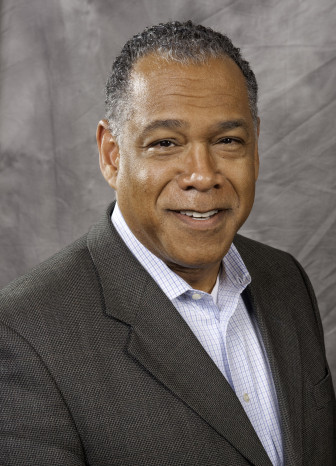
Joe Szurzewski
Mitchell Silver
He’s very committed to healthy, safe, accessible, and equitable parks throughout the entire city of New York. That is basically my charge by coming on board. Certainly the mayor is looking for using the park system as a catalyst for neighborhood development. It’s a refreshing approach. As a planner I found it to be a very exciting challenge and knowing that it’s not just park system planning but planning in general. Parks do not sit in isolation. I look at the anatomy of city. An anatomy has systems that make it up — road systems, park systems, and sewer systems — it’s connected to other things. It’s just not a system on itself.
The mayor recognizes that and understands to build a great park system means you have to understand the anatomy of the entire city. With that, I was quite excited. This is probably the most difficult decision I’ve ever made. What I’ve been telling people is that I love Raleigh mind, body, and soul. It’s been my identity for nine years. I’ve never left a job in a community that I loved more than Raleigh. This was probably the most difficult career decision that I’ve ever made. But with the opportunity was not something I could turn down: hometown and the vision of this mayor.
